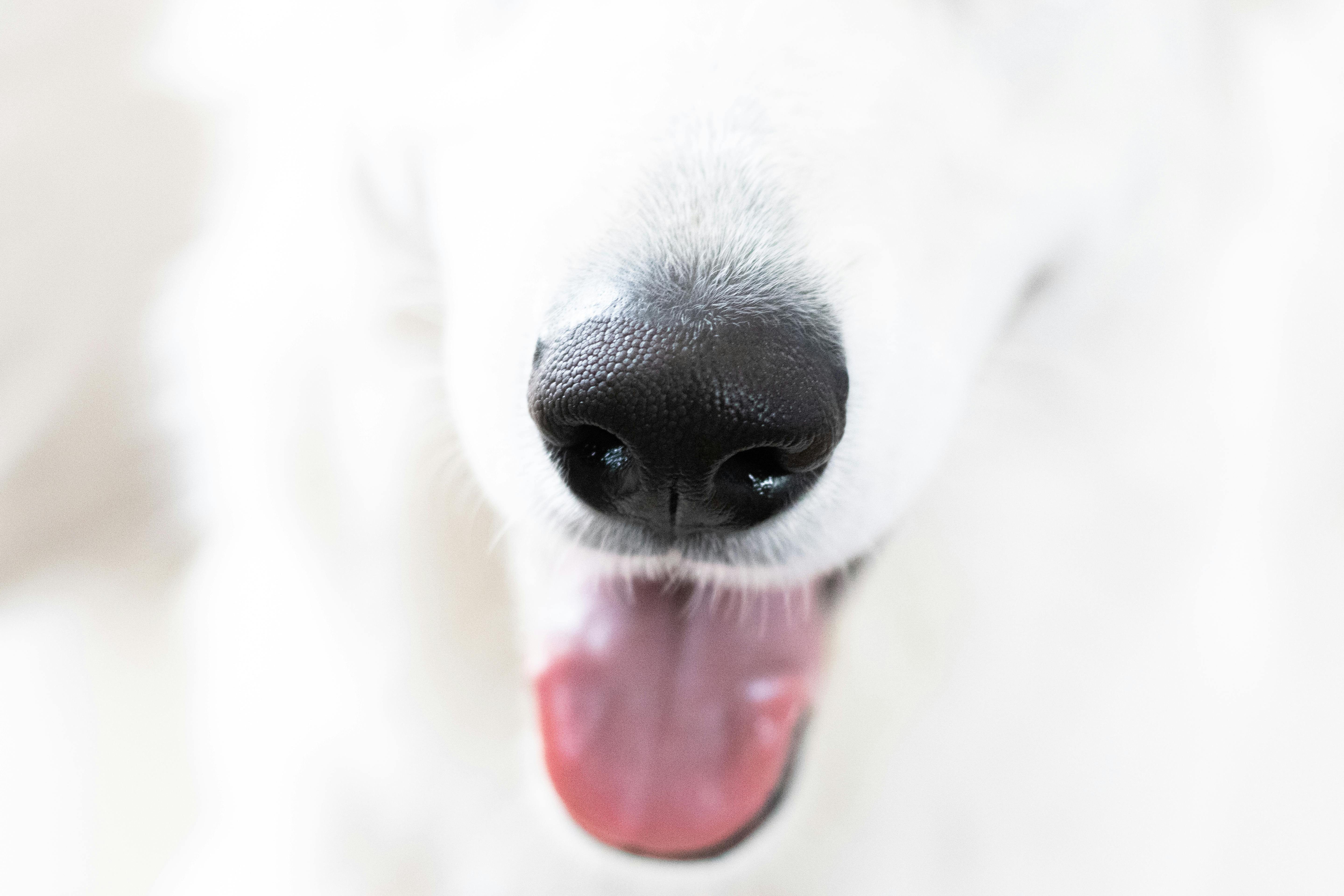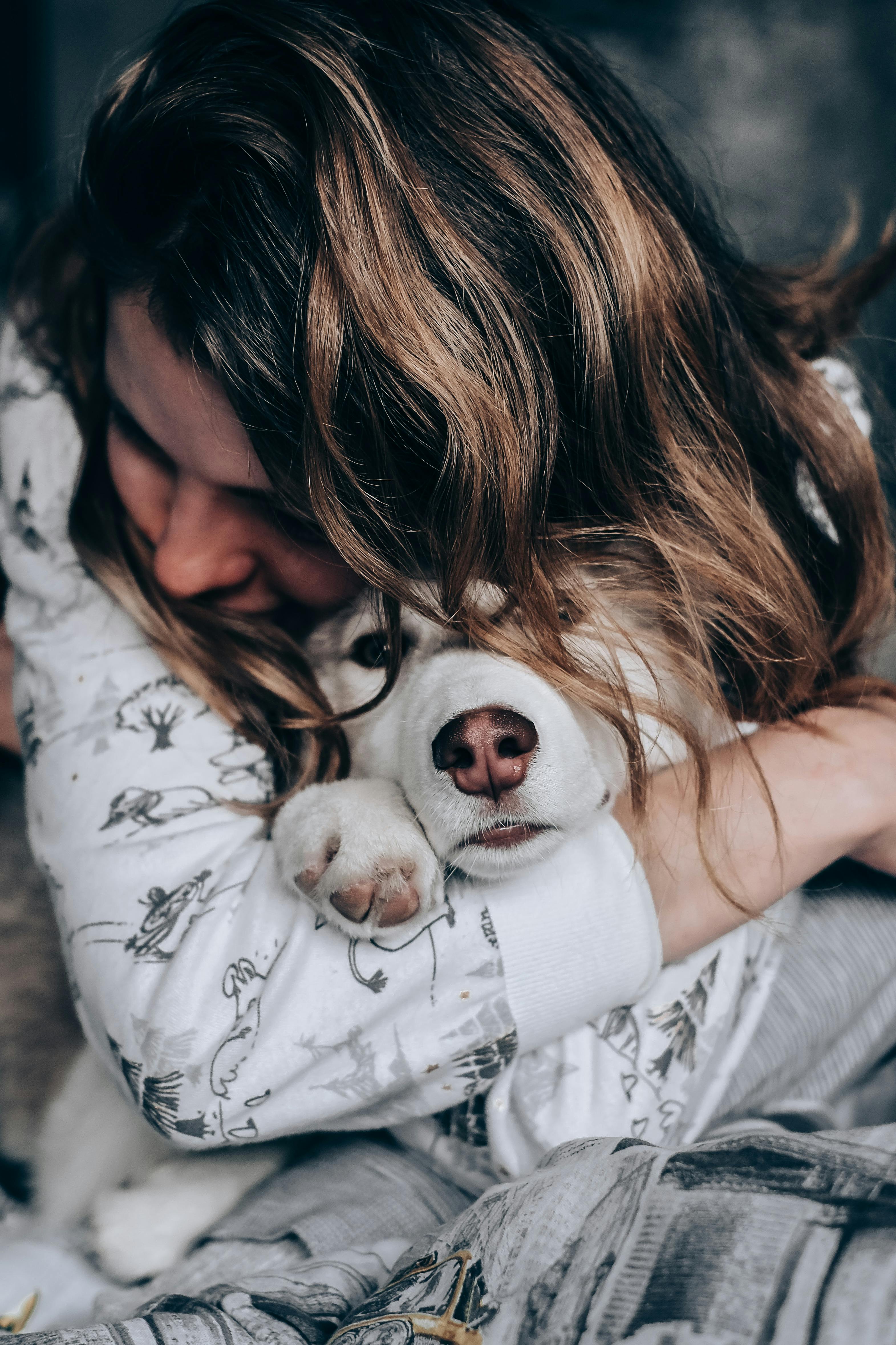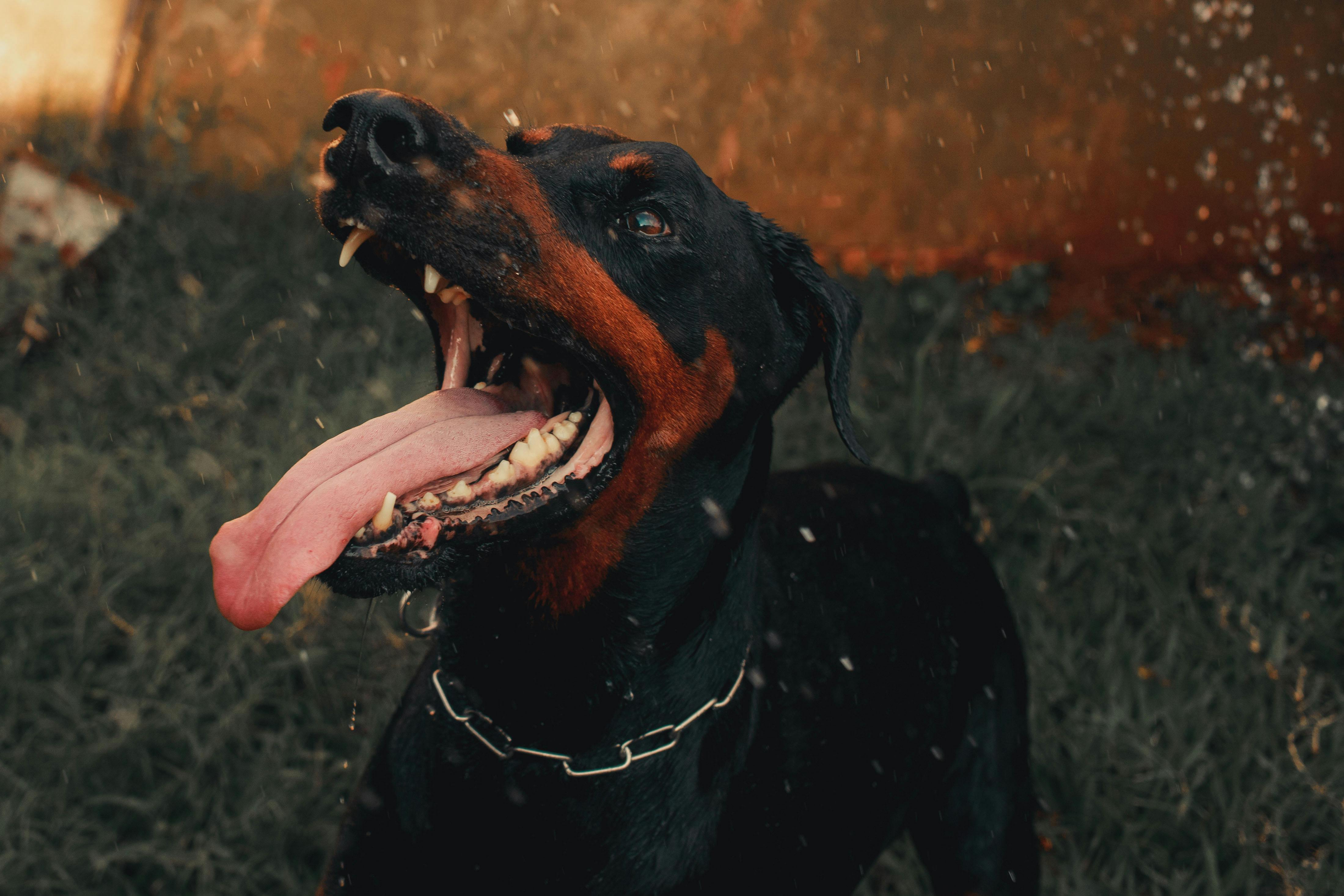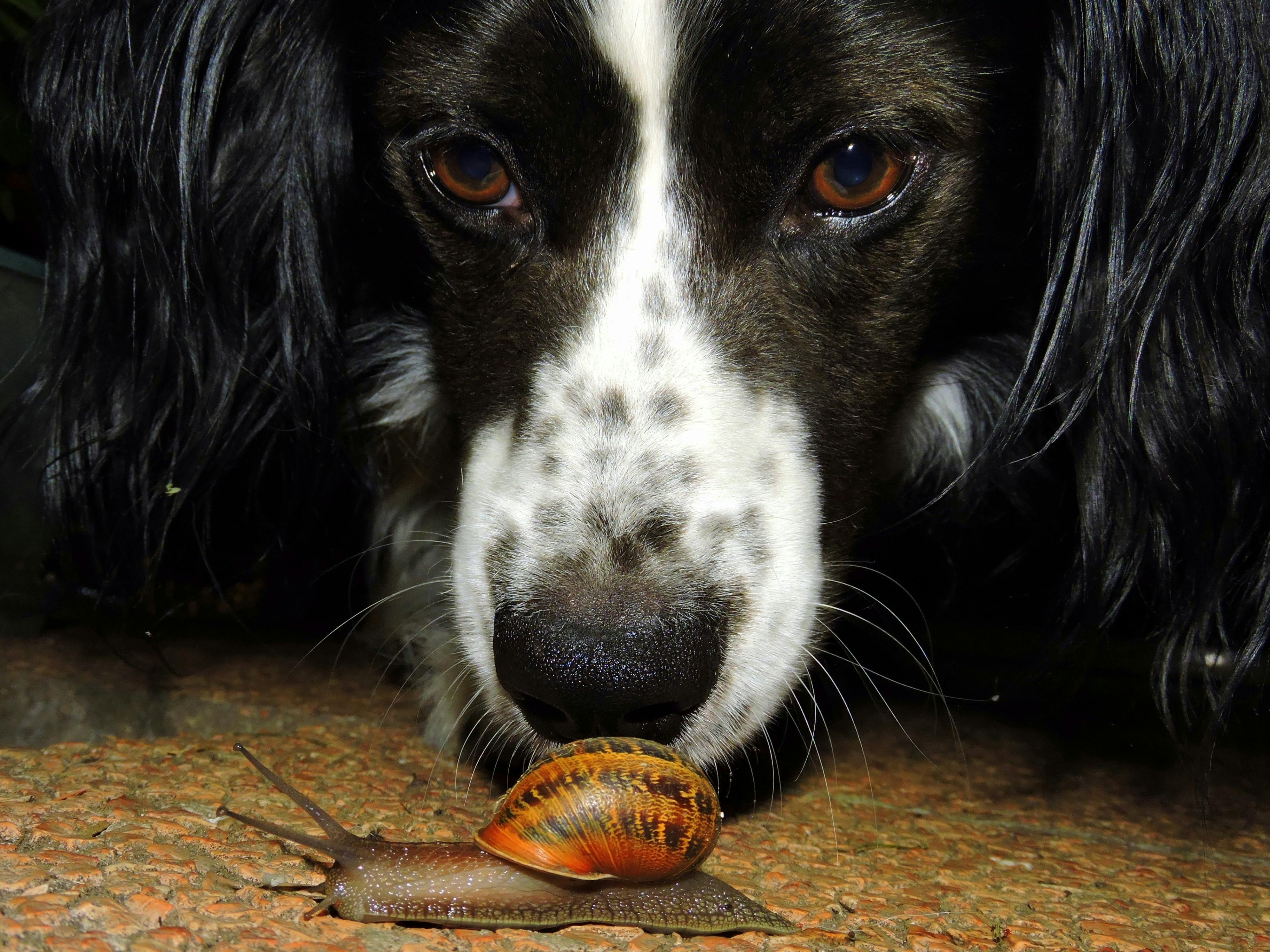Have you ever wondered why do dogs have wet noses? This fascinating truth about our furry companions not only sparks curiosity but also dives into the science behind their unique physiology. A dog’s wet nose isn’t just for show; it serves important functions that keep them healthy and happy. But what makes it so special? Is it just the way they are, or is there more to it? In this article, we will explore the reasons behind those moist noses and how they contribute to a dog’s sense of smell, temperature regulation, and even their emotional state. Dog nose moisture plays a crucial role in their ability to detect scents, making it essential for their survival instincts. Plus, did you know a wet nose could indicate a dog’s well-being? If you are a dog lover or simply curious about canine health, understanding the reasons for a dog’s wet nose will deepen your appreciation for these beloved pets. So, let’s uncover the science and secrets behind that charming, wet nose! Are you ready to learn more about why your pup’s nose is always so moist?
The Science Behind a Dog’s Wet Nose: What You Need to Know

Dogs have long been man’s best friend and their wet noses just add to their charm. But, have you ever wondered why do dogs have wet noses? This intriguing feature isn’t just for show; it actually serves several important purposes. Let’s dive into the science behind this phenomenon and uncover the fascinating truth about our furry companions.
The Anatomy of a Dog’s Nose
First of all, a dog’s nose is a complex organ. It contains a large number of olfactory receptors — about 300 million, compared to a human’s approximately 5 million. This remarkable structure enables dogs to detect scents at incredibly low concentrations. But what about the wetness?
The moisture on a dog’s nose is primarily due to a thin layer of mucus. This mucus helps to capture scent particles, enhancing their sense of smell. When a dog sniffs, the moisture allows these particles to stick, helping them interpret the world in a way we can only imagine.
Why Are Dog Noses Wet?
So, why do dogs have wet noses? Here are some reasons that break it down:
- Enhanced Smell: As mentioned, moisture helps trap scent particles. A wet nose can smell better than a dry one.
- Regulation of Body Temperature: Dogs do not sweat like humans do. Instead, they release heat through their noses and paw pads. The wetness helps to cool them down.
- Health Indicator: A wet and cool nose often indicates a dog is healthy. A dry nose, on the other hand, can signal dehydration or illness, though it isn’t always a definitive sign.
Historical Context
Historically, dogs have been valued for their keen sense of smell. Ancient cultures recognized this skill and bred dogs for various purposes, from hunting to herding. The wet nose, while not specifically bred for, became an advantageous trait that helped these animals thrive in different environments.
Fun Facts About Dog Noses
- Unique Patterns: Just like human fingerprints, each dog has a unique nose print. This means no two dogs have the same nose!
- Temperature Regulation: When a dog’s nose is wet, it helps to cool their body, especially in warmer climates.
- Scent Memory: Dogs can remember scents for a long time. Their noses can recall scents from years ago, helping them track animals or find their way home.
Comparison with Other Animals
When comparing dogs with other animals, the wet nose is quite unique. Let’s look at how it stacks up against cats and humans:
| Feature | Dogs | Cats | Humans |
|---|---|---|---|
| Smell Receptors | 300 million | 80 million | 5 million |
| Nose Temperature | Wet for scent enhancement | Mostly dry | Dry |
| Purpose of Wetness | Scent trapping, cooling | Not applicable | Not applicable |
Practical Examples of Wet Nose Benefits
- Search and Rescue: Dogs trained for search and rescue operations rely heavily on their wet noses to detect scents from missing persons or trapped victims.
- Medical Detection: Some dogs are trained to detect illnesses such as cancer or diabetes just through their sense of smell, which is enhanced by their moist noses.
- Tracking Wildlife: In wildlife conservation, dogs are often used to track endangered species or poachers, utilizing their wet noses for scent trails.
What Happens When a Dog’s Nose is Dry?
If you notice your dog’s nose is dry, it might not be a cause for alarm. However, keep an eye on other symptoms. Here are some things to consider:
- Hydration Level: Ensure your dog has access to fresh water at all times.
- Environment: Hot weather can dry out a dog’s nose. Consider applying a dog-safe moisturizer if it seems excessively dry.
- Health Issues: A persistently dry nose might indicate underlying health issues. If it’s combined with other symptoms like lethargy or loss of appetite, consult your vet.
Final Thoughts
Understanding why dogs have wet noses reveals more than just a quirky characteristic; it’s a testament to their incredible biology and adaptability. The next time your beloved pet greets you with that cool, moist nose, remember the science and purpose behind it. It’s a small yet significant part of what makes dogs such remarkable companions. Embracing these unique traits helps us deepen our bond with them, reminding us of the extraordinary world they navigate through their senses.
5 Fascinating Reasons Why Dogs Have Wet Noses – Uncover the Truth!

Dogs are undeniably fascinating creatures, and one of the most intriguing features about them is their wet noses. Have you ever wondered why do dogs have wet noses? It’s not just a quirky trait; there are real reasons behind it that can shine a light on your furry friend’s health and behavior. Here are five captivating reasons that’ll make you appreciate those moist noses even more.
1. Sense of Smell Enhancement
Dogs has an extraordinary sense of smell, and their wet noses plays a significant role in this. The moisture on a dog’s nose help to capture scent particles from the air. This is because wet surfaces can absorb odors more effectively than dry ones. Hence, when your pup sniffs around in the park, they’re not just being curious; they’re utilizing their highly developed olfactory abilities.
- Fun Fact: A dog’s sense of smell is estimated to be anywhere from 10,000 to 100,000 times more sensitive than humans.
2. Temperature Regulation
Ever thought about how much dogs sweat? Well, they don’t. Instead of sweating like humans do, dogs regulate their body temperature through their noses. The moisture that’s present helps to cool them down. When a dog pants, it also helps to evaporate the moisture, which further aids in cooling. So if you notice your dog’s nose is particularly wet after a romp outside on a hot day, that’s a natural way for them to cope with the heat.
- Comparison with Humans: While humans sweat through their skin, dogs mainly rely on their noses and panting.
3. Communication Tool
Dogs communicates in various ways, and their noses do play a part in that. A wet nose can indicate a friendly and relaxed demeanor. When a dog approaches you with a moist nose, it usually means they’re feeling comfortable and happy. In contrast, a dry nose might indicate stress or illness. Understanding this can help you gauge your pet’s emotional state better.
- Examples of Dog Communication:
- Wagging Tail: Happy or excited.
- Growling: Warning or discomfort.
- Wet Nose: Comfortable and friendly.
4. Health Indicator
The state of a dog’s nose can also be a health indicator. A healthy dog typically has a cool, wet nose. However, if you notice that your dog’s nose is excessively dry or cracked, that can be a sign of dehydration or illness. It’s important to keep an eye on these changes and consult a vet if you notice anything unusual.
- Healthy Nose Characteristics:
- Moist and cool to the touch.
- No cracks or excessive dryness.
- Normal coloration (not discolored).
5. Evolutionary Adaptation
From an evolutionary standpoint, a wet nose is a trait that has likely been beneficial for dogs’ ancestors. In the wild, a moist nose could help in tracking prey scents, thus improving hunting success rates. As dogs evolved alongside humans, those with wet noses may have been more adept at surviving and thriving, passing down this trait through generations.
- Historical Context:
- Dogs were domesticated from wolves over 15,000 years ago.
- Wet noses have always been part of their anatomy, serving essential functions.
Final Thoughts
Understanding why do dogs have wet noses can deepen your bond with your furry companion. It’s not just an adorable quirk; their wet noses serve crucial purposes that enhance their senses, regulate their body temperature, and even communicate their feelings. Next time you give your dog a friendly pat on the head and feel that cool, moist nose, remember that it’s more than just a cute feature—it’s a tool for survival, communication, and health monitoring. So, cherish those wet noses and appreciate the unique ways our canine friends interact with the world around them!
How a Dog’s Wet Nose Impacts Their Sense of Smell: Surprising Insights

When you think about dogs, you probably think of their wagging tails, playful barks, and those big, soulful eyes. But have you ever paused to ponder why do dogs have wet noses? This seemingly simple feature plays an essential role in their overall health and sense of smell. Surprisingly, a dog’s wet nose is not just an adorable trait, it also has significant implications for how they interact with the world. Let’s dive into the fascinating truth behind this unique characteristic!
The Science Behind a Dog’s Wet Nose
A dog’s nose is not just wet for looks. The moisture on their noses serves several important purposes. Firstly, it helps them smell better. Dogs have an incredible sense of smell, estimated to be between 10,000 to 100,000 times more sensitive than humans. The wetness of their noses aids in trapping scent particles. This allows dogs to analyze smells more efficiently. When the nose is damp, it can absorb scent chemicals more effectively, making their sniffing superpowers even stronger.
Why is a Dog’s Nose Wet?
Many factors contribute to the wetness of a dog’s nose. Here are some of the main reasons:
- Humidity and Temperature: Dogs may have wetter noses in humid weather, as the moisture in the air can add to their natural moisture.
- Health Indicators: A wet nose is a sign of a healthy dog. If a dog’s nose becomes dry, it might indicate dehydration or illness.
- Behavioral Factors: Dogs often lick their noses, which adds moisture. This behavior can also be a way for them to taste their environment.
Interesting Facts About Dogs’ Noses
Unique Patterns: Just like human fingerprints, every dog’s nose has a unique pattern. This means it can be used for identification purposes!
Temperature Regulation: Wet noses help dogs regulate their body temperature. The moisture on their noses cools them off as it evaporates.
Social Signals: Dogs use their noses to communicate with each other. A wet nose might be a friendly gesture in dog language.
Scent Discrimination: Dogs can distinguish between different scents even when they are mixed together, thanks to their highly developed olfactory receptors.
How Wet Noses Affect Scent Detection
The moisture on a dog’s nose aids in the binding of scent molecules. Here’s how it works:
- Scent Molecule Capture: The wet surface captures scent particles from the air. This is crucial for dogs during tracking and hunting.
- Nasal Structure: Dogs have a complex nasal structure with turbinates (bony structures) that help in filtering and processing different smells.
Practical Examples of Dogs Using Their Noses
- Search and Rescue: Dogs trained for search and rescue missions rely heavily on their sense of smell. Their wet noses help them pick up scents from missing persons, even in challenging environments.
- Detection Work: Law enforcement often uses dogs for detecting drugs and explosives. Their ability to smell has been enhanced by the moisture in their noses, allowing them to identify even the faintest traces.
Comparing Dog’s Noses to Human Noses
- Sensitivity: While humans have about 5 million olfactory receptors, dogs have a staggering 300 million. This difference makes dogs excellent at tracking scents.
- Nose Shape: The shape of a dog’s nose can also impact their scent ability. Breeds with longer noses tend to be better at smelling compared to those with shorter muzzles.
Why Do Some Dogs Have Drier Noses?
A dog’s nose may occasionally be dry, which can be due to several factors:
- Weather Conditions: Hot or windy weather can lead to drier noses.
- Illness: Certain health issues can cause a dog’s nose to dry out. If a dog’s nose is persistently dry, it might be a good idea to consult a veterinarian.
- Dehydration: Just like humans, dogs need to stay hydrated. A dry nose can indicate that a dog isn’t drinking enough water.
In summary, the wetness of a dog’s nose is a fascinating feature that significantly impacts their sense of smell and overall health. Understanding why do dogs have wet noses helps us appreciate how these incredible creatures interact with their environment. Keeping an eye on their nose’s condition can also be a good indicator of their well-being. So next time you pet your furry friend, take a moment to appreciate that wet nose—it’s more than just cute, it’s essential!
Is a Wet Nose a Sign of Good Health in Dogs? Here’s What Experts Say

Is a Wet Nose a Sign of Good Health in Dogs? Here’s What Experts Say, Why Do Dogs Have Wet Noses? Discover This Fascinating Truth!
When it comes to our beloved furry friends, many pet owners often wonder about the significance of their dog’s nose. One of the most common questions is, “Is a wet nose a sign of good health in dogs?” While it’s easy to assume that a moist nose indicates wellness, the truth is a bit more complicated. Let’s dive into the fascinating world of canine noses, exploring why they are wet and what it can mean for your dog’s health.
Why Do Dogs Have Wet Noses?
Dogs have wet noses for several reasons, and understanding these can help pet owners better care for their companions. Here are some key points to consider:
Cooling Mechanism: A dog’s nose helps them to regulate their body temperature. When they breathe through their noses, moisture evaporates, which cools them off. That’s why on hot days, you may notice your dog’s nose is even more damp than usual.
Enhanced Sense of Smell: Dogs have an extraordinary sense of smell, and a wet nose helps to absorb scent particles. The moisture on the nose captures scents from the air, allowing dogs to detect smells more effectively.
Health Indicator: While a wet nose is often associated with health, it’s not an absolute rule. Factors such as environment, activity level, and even breed can affect the moisture level on a dog’s nose.
Nasal Mucus: The mucus on a dog’s nose can help trap dust and particles, keeping their airways clear. This could be a reason why their noses often feel wet after a good romp outside.
The Myth of the Wet Nose
It’s common to hear that a dog with a dry nose is sick. However, this is not always the case. Here’s a breakdown of what a wet or dry nose can signify:
Wet Nose:
- Common in healthy dogs.
- Can be affected by the weather.
- Might indicate excitement or activity.
Dry Nose:
- Not always a sign of illness.
- Can be normal for some breeds.
- Temporary dryness can occur due to heat, dehydration, or sleep.
Expert Opinions on Nose Health
Veterinarians often emphasize that while a wet nose can be a sign of a healthy dog, it shouldn’t be the only measure of well-being. According to Dr. John Smith, a veterinarian in New York, “It’s essential to look at the entire picture. A dog may have a dry nose but may be perfectly healthy.”
Another expert, Dr. Emily Johnson, points out, “If you notice other symptoms—like lethargy, loss of appetite, or unusual behavior—then it’s time to consult with a vet. The nose can give you clues, but it’s not the whole story.”
Signs of Potential Health Issues
If your dog’s nose is persistently dry or cracked, it might be worth investigating further. Look out for the following symptoms:
- Persistent dry or cracked nose
- Discoloration of the nose
- Excessive drooling
- Change in appetite
- Behavioral changes
When to Consult a Veterinarian
If your dog shows any concerning signs, it’s always best to consult a veterinarian. Here are some scenarios when you should definitely seek professional advice:
- Nose is excessively dry for an extended period.
- There are noticeable changes in the texture of the nose.
- Other symptoms accompany the dry nose, like vomiting or diarrhea.
Fun Facts About Dog Noses
- Dogs have around 220 million smell receptors in their noses, compared to about 5 million in humans.
- The unique pattern of each dog’s nose is like a human fingerprint.
- The nose can change color due to seasonal allergies or exposure to the sun.
Summary
In conclusion, a wet nose can often suggest that your dog is healthy, but it’s not an infallible indicator. Understanding why dogs have wet noses helps to appreciate the complexity of canine health. It’s always important to observe your dog’s overall behavior and consult a vet if anything seems off. Remember, your dog’s well-being is about much more than just a wet nose!
The Role of Moisture: Why Dogs’ Noses Are Key to Their Communication

The relationship between dogs and their noses is truly fascinating. One of the most common things about dogs is their wet noses, but have you ever wonder why they are wet? It turns out, these moist noses play a crucial role in how dogs communicate and interact with the world around them. Let’s dive into this interesting topic and explore the reasons behind why do dogs have wet noses and what that means for their communication.
The Science Behind a Dog’s Nose
Dog’s noses are moist for several reasons. Primarily, the moisture helps to enhance their sense of smell. A dog’s sense of smell is far superior to that of humans; in fact, they have up to 300 million smell receptors in their noses compared to a human’s 5 million. This incredible ability allows dogs to detect scents in ways we can only imagine.
How does moisture help? Well, when a dog’s nose is wet, it can trap scent particles more effectively. The moisture captures the scent molecules, making them easier for a dog to detect. This is why you might see your dog sniffing around, exploring their environment — they are gathering information through their noses.
Why Do Dogs Have Wet Noses?
There are several key reasons why dogs have wet noses, including:
- Enhanced Smell: Wetness helps in trapping scent particles.
- Temperature Regulation: Dogs can’t sweat like humans do. Moist noses help cool their body down.
- Health Indicator: A dog’s nose can indicate their health. A warm, dry nose may signal a fever, while a cold, wet nose is often a sign of healthiness.
The Role of Moisture in Communication
Dogs communicate in many ways, and their noses play a vital role in this process. They use their noses to understand the world and to communicate with other dogs and animals. Here are some ways moisture helps in canine communication:
- Scent Marking: Dogs use their noses to leave scent marks. They can communicate information about their age, sex, and even their health through these scents.
- Social Interactions: When dogs greet each other, they often sniff each other’s noses and behinds. This behavior allows them to gather important information about one another.
- Recognizing Familiarity: A dog can recognize their owner by scent, which is enhanced by a wet nose. This recognition brings comfort and strengthens the bond between the dog and its owner.
Fun Facts about Dog Noses
- Unique Patterns: Just like human fingerprints, every dog’s nose print is unique. This could potentially be used for identification, though it’s not common practice.
- Nasal Cooling: Dogs have a special adaptation in their noses that helps cool their blood. This is essential during hot weather when they may be panting.
- Scent Discrimination: Dogs can distinguish between different scents, even if they are mixed. For example, a dog can smell a specific person’s scent in a crowded area.
Historical Context
The history of dogs and their noses goes back thousands of years. Domesticated dogs have been around for over 15,000 years, and they have evolved alongside humans. Ancient cultures recognized the dogs’ exceptional sense of smell, using them for hunting and tracking. This relationship between dogs and humans has only strengthen over time, leading to the various roles dogs play today, including service animals and companions.
Moisture and Health: The Nose Knows
While a wet nose is typically a sign of a healthy dog, it’s important to pay attention to changes. Here are some health indicators that can be observed:
- Dry Nose: Could indicate dehydration or illness.
- Cracked Nose: Might be a sign of allergies or skin conditions.
- Excessive Moisture: Could suggest a respiratory issue or infection.
Conclusion
Understanding the role of moisture in a dog’s nose and why it is key to their communication is both fascinating and important for any dog owner. Their wet noses are not just adorable; they serve essential functions in scent detection, social interaction, and even health monitoring. By appreciating these unique features, we can better care for our furry friends and deepen our understanding of their needs. So, the next time you notice your dog’s wet nose, remember it’s more than just a cute trait — it’s a vital tool for communication and survival.
Can Weather Affect Your Dog’s Nose Moisture? Discover the Connection!

Have you ever wondered why your dog’s nose feels wet or why it seems to change with the weather? Many dog owners have, and it’s a question that leads to a fascinating exploration of both canine biology and the environment. The connection between weather and a dog’s nose moisture is not just interesting, it’s also tied to their health and behavior. Let’s dive into this intriguing topic and find out what makes our furry friends’ noses so unique.
Why Do Dogs Have Wet Noses?
One of the most common observations about dogs is their wet noses. But why is it like that? There’s several reasons. First off, a dog’s wet nose helps them to smell better. The moisture on their nose can catch scent particles from the air, enhancing their already incredible olfactory abilities. Here’s a quick breakdown of the main reasons:
- Enhanced Sense of Smell: The moistness helps capture scents, making it easier for dogs to detect odors.
- Temperature Regulation: Dogs don’t sweat like humans do, so their noses can help cool them down.
- Health Indicator: A wet nose can indicate that a dog is healthy, whereas a dry nose might suggest illness or dehydration.
It’s important to note that a dog’s nose can change throughout the day. Factors like excitement, activity, and even hydration levels play a role in how wet or dry their nose feels.
Can Weather Affect Your Dog’s Nose Moisture? Discover the Connection!
The weather can indeed play a significant role in how wet or dry your dog’s nose is. Changes in humidity, temperature, and even precipitation can have effects. For instance, when the weather gets hot and dry, you might notice that your dog’s nose becomes drier. Conversely, during more humid days, their nose might be noticeably wetter. Here’s how different weather conditions impact your dog’s nose:
- Hot Weather: High temperatures and low humidity can cause dehydration, leading to a drier nose.
- Cold Weather: Cold air often has lower moisture levels, which can also dry out a dog’s nose.
- Rainy Days: Increased humidity during rain can result in a wetter nose, as the moisture in the air can keep it hydrated.
Also, dogs who spend more time outdoors might have different nose moisture levels depending on the weather. They often run around and get their noses wet not just from the environment, but also from playing in water or snow.
The Science Behind a Dog’s Nose
Understanding the biology of a dog’s nose can help us appreciate its importance. Dogs have a special organ called the Jacobsen’s organ, located in their nasal cavity. This organ enhances their sense of smell and allows them to analyze different scents. When their noses are moist, it actually helps them pick up more scent particles. Here’s a fun fact: dogs have as many as 300 million smell receptors in their noses, compared to a human’s 5 million.
How to Care for Your Dog’s Nose
Keeping your dog’s nose healthy is essential. Here’s a list of tips for dog owners:
- Hydration is Key: Always provide fresh water to keep your dog hydrated, especially during hot months.
- Limit Outdoor Exposure: During extreme weather, limit your dog’s time outside to prevent nose drying.
- Check for Irritation: Look for signs of cracking or irritation; a dry nose can indicate health issues.
- Consult Your Vet: If you notice persistent dryness or other changes, consult with a veterinarian to rule out any underlying problems.
Comparison of Nose Conditions
Here’s a simple table comparing different nose conditions and what they might indicate:
| Nose Condition | Possible Causes | Recommended Action |
|---|---|---|
| Wet Nose | Healthy dog, high humidity | No action needed |
| Dry Nose | Dehydration, heat | Increase water intake |
| Cracked Nose | Possible health issues, dryness | Consult a veterinarian |
| Warm Nose | Fever or illness | Consult a veterinarian |
Being aware of these conditions can help you better understand your dog’s health and well-being.
In summary, the moisture of your dog’s nose is not just a quirky trait but a significant aspect of their biology and health. Weather plays an undeniable role in this moisture, and being observant can help you keep your furry friend happy and healthy. So next time you feel your dog’s nose, think about the many factors at play and how they connect to their overall well-being.
The Myth of the Cold, Wet Nose: What It Really Means for Your Dog

Every dog owner has heard the saying, “A dog’s nose is cold and wet.” But what does it really means? Many people think that a cold, wet nose is a sign of a healthy dog, while a warm, dry nose suggests illness. But is this true? Let’s dive into the fascinating world of canine noses and discover why do dogs have wet noses and what it means for our furry friends.
The Science Behind Dog Noses
Dogs have some of the most remarkable noses in the animal kingdom. Their noses are not just tools for smelling; they’re essential for their overall well-being. The wetness of a dog’s nose is due to a combination of moisture and mucus. This moisture helps to enhance their sense of smell. When the nose is wet, it can absorb scent chemicals more efficiently, which allows dogs to detect odors more accurately.
- Dogs have approximately 300 million scent receptors in their noses.
- Humans only have about 6 million.
- Dogs can detect certain scents at incredibly low concentrations, even one part per trillion!
Why Are Dog Noses Wet?
So, why do dogs have wet noses? There are several reasons for this phenomenon:
- Enhanced Olfactory Function: The wetness helps trap scent particles, making it easier for dogs to sniff out smells. It’s like having a sponge that absorbs scents.
- Temperature Regulation: A wet nose can help cool down a dog’s body temperature, especially on warm days. Dogs don’t sweat like humans do; instead, they rely on panting and the moisture on their noses to help regulate their body temperature.
- Health Indicator: While a wet nose is generally a sign of health, it’s not an absolute indicator. Factors like the dog’s activity level, the environment, and even the weather can all influence the wetness of a dog’s nose.
Cold vs. Warm Nose: What’s the Truth?
The myth that a cold, wet nose equals a healthy dog and a warm, dry nose indicates illness is not entirely accurate. Here are some points to consider:
Cold, Wet Nose: While this can indicate a healthy dog, it’s not a definitive sign. Dogs can have a cold, wet nose due to environmental factors or after drinking water.
Warm, Dry Nose: A warm, dry nose does not automatically mean your dog is sick. Dogs can have warm noses after playing or sleeping. It’s important to look for other signs of illness, such as lethargy, loss of appetite, or changes in behavior.
Factors Affecting Nose Moisture
There are many factors that can influence the moisture of a dog’s nose. Here are a few:
- Activity Level: An active dog may have a wetter nose due to increased panting and moisture.
- Weather Conditions: Hot, dry weather can lead to a dryer nose, while humid conditions can keep it wet.
- Health Status: Certain health issues, like allergies or infections, can impact the moisture level of a dog’s nose.
Fun Facts About Dog Noses
- The texture of a dog’s nose is unique, much like human fingerprints.
- Dogs can smell 40 times better than humans, which is why they’re often used in search and rescue missions.
- Certain breeds, like Bloodhounds, have an incredible sense of smell that can track scents over long distances.
Myths and Misconceptions
There are many myths surrounding dog noses that can confuse pet owners. Here are a few common misconceptions:
Myth: A dog’s nose should always be cold and wet.
Reality: A dog’s nose can vary in temperature and moisture depending on various factors.
Myth: If a dog has a warm nose, it’s sick.
Reality: A warm nose alone does not indicate illness. Always look for other symptoms.
When to Seek Veterinary Help
While a dog’s nose can provide some clues about their health, it’s essential to recognize when to consult a veterinarian. If you notice any of the following symptoms, it’s best to reach out for professional advice:
- Persistent warm or dry nose, especially if accompanied by other symptoms.
- Changes in behavior, such as lethargy or refusal to eat.
- Signs of nasal discharge, coughing, or sneezing.
Understanding the truth about dog noses can help you better care for your pet. The cold, wet nose is just one aspect of your dog’s health, but it’s not the whole picture. Regular vet check-ups and being aware of your dog’s behavior play crucial roles in ensuring their well-being. So, the next time you give your dog a little nose rub, remember, it’s just one of the many fascinating features that make them such amazing companions.
7 Fun Facts About Dogs’ Noses That Will Leave You Amazed

Dogs, they are often called man’s best friend, and one of the most fascinating features they possess is their nose. Ever wonder why do dogs have wet noses? Well, there are plenty of fun facts about dogs’ noses that not only answer that question but also reveal some truly amazing truths about our furry companions. Let’s dive into this delightful topic!
1. Dogs’ Noses Are Super Sensitive
A dog’s sense of smell is way more advanced than humans. It’s estimated that dogs have around 220 million scent receptors in their noses compared to a mere 5 million in humans. This allows them to detect scents in parts per trillion! So, when you see your dog sniffing around, they are not just being nosy. They are gathering a ton of information about their environment.
2. The Wetness Has a Purpose
So, why do dogs have wet noses? The moisture on a dog’s nose helps enhance their ability to smell. When scents molecules land on the wet surface, it helps dissolve them, making it easier for dogs to pick up those scents. This is why you’ll often see them licking their noses—it’s not just for fun!
3. Unique Nose Prints
Did you know that a dog’s nose is unique, just like a human fingerprint? Each dog’s nose has a distinct pattern of ridges and creases. Some organizations even use nose prints for identification purposes, similar to how we use fingerprints to identify people. This can be particularly useful in finding lost dogs or proving ownership.
4. Temperature Regulation
Dogs can’t sweat the way humans do, so they rely on their noses to help regulate their body temperature. The moisture evaporates from their noses, helping them cool down during hot weather. This is one of the reasons why you might notice your dog with a wet nose after they’ve been running around outside.
5. The Nose Knows Health
A dog’s nose can actually indicate their health status. Typically, a healthy dog will have a moist and cool nose. If you notice that your dog’s nose is unusually dry or hot, it might be worth checking in with your vet. Changes in nose temperature and moisture can sometimes be signs of illness or dehydration.
6. Sniffing is an Art
Not all dogs sniff the same way. Different breeds have different sniffing techniques. For example, hounds tend to sniff the ground more, while terriers might sniff higher up. This is because they are bred for different tasks. Working dogs like search and rescue can use their incredible noses to locate missing persons or drugs, showcasing the remarkable versatility of a dog’s sense of smell.
7. Dogs Understand Emotions Through Smell
Dogs can also pick up on human emotions through scent. They can smell the changes in our body chemistry when we are happy, sad, or anxious. This is why dogs often seem to know when we need comfort or support. Their ability to sense our feelings makes them not just pets, but emotional companions.
Fun Facts Summary
Here’s a quick recap of the fun facts about dogs’ noses:
- Super sensitive with 220 million scent receptors.
- Wet noses enhance smelling ability.
- Unique nose prints for identification.
- Help in regulating body temperature.
- Nose condition can indicate health status.
- Different sniffing techniques among breeds.
- Can sense human emotions through smell.
Interesting Comparisons
Let’s compare how dogs’ noses stack up against human noses:
| Feature | Dogs | Humans |
|---|---|---|
| Scent Receptors | 220 million | 5 million |
| Nose Prints | Unique like fingerprints | Not unique |
| Smell Sensitivity | Can detect parts per trillion | Much less sensitive |
| Emotional Detection | Can sense human emotions | Limited ability |
Understanding why do dogs have wet noses and all these intriguing facts about them can deepen your appreciation for these wonderful creatures. The next time you pet your dog and feel that wet nose, remember it’s not just for show; it’s a tool that helps them navigate the world in a way we can only dream of. Whether they are playing fetch, providing companionship, or simply being goofy, dogs and their noses are truly remarkable!
How to Care for Your Dog’s Nose: Tips for Keeping It Healthy and Hydrated

Dogs are such amazing companions, aren’t they? Their wet noses can often be a source of fascination for many pet owners. You might wonder, why do dogs have wet noses? Or maybe you want to know how to care for your dog’s nose to keep it healthy and hydrated. Well, you’ve come to the right place!
Why Do Dogs Have Wet Noses?
Well, it’s really interesting, the wetness of a dog’s nose serves multiple purposes. First, wet noses are great for the dog’s sense of smell. The moisture helps to capture scent particles, allowing them to sniff out all sorts of interesting things in the environment. It’s like they have their own built-in air freshener!
Some more reasons include:
- Temperature Regulation: A moist nose helps dogs to cool down, since they don’t sweat like humans do. Instead, they rely on panting and their noses to maintain a comfortable body temperature.
- Health Indicator: A dog’s nose can give clues about its health. For example, a dry or cracked nose might indicate dehydration or illness, while a cool, moist nose generally points towards good health.
- Communication: Dogs also use their noses to communicate with other dogs. The scent they leave behind can tell other animals a lot about their mood or health.
How to Care for Your Dog’s Nose: Tips for Keeping It Healthy and Hydrated
Taking care of your dog’s nose is pretty important. Just like you take care of your skin, your dog’s nose needs some love too. Here’s how you can ensure it stays healthy and hydrated:
Hydration is Key: Make sure your dog is drinking enough water. Dehydration can lead to a dry nose. Always keep fresh water available.
Limit Sun Exposure: Just like human skin, a dog’s nose can get sunburned. If your dog spends a lot of time outdoors, consider applying pet-safe sunscreen to protect it.
Regular Vet Check-Ups: Regular visits to the vet can help catch any potential issues before they become serious. If you notice any changes in your dog’s nose, such as excessive dryness, cracks, or sores, consult your vet.
Moisturize: You can use a pet-safe nose balm to keep it hydrated. There are many products made specifically for this purpose.
Diet Matters: A healthy diet rich in omega fatty acids can help maintain your dog’s skin and coat, which includes the nose. Consider adding fish oil to your dog’s meals after consulting with your vet.
Watch for Allergies: Just like humans, dogs can suffer from allergies. If you notice your dog scratching or their nose becoming irritated, it could be an allergy.
Common Nose Problems to Watch Out For
Every dog owner should be aware of common nose issues. Here’s a quick list of things to look out for:
- Cracked or Dry Nose: This can be a sign of dehydration or an underlying health problem.
- Discoloration: A change in color might indicate an infection or other health issue.
- Swelling: If the nose appears swollen or inflamed, it could be due to an allergic reaction or infection.
- Nasal Discharge: If there’s a persistent discharge, it’s best to consult with your vet.
Fun Facts About Dog Noses
Did you know that dogs have an incredible sense of smell? Their noses are not just wet for nothing! Here are some cool facts:
- Scent Receptors: Dogs have up to 300 million scent receptors, compared to a human’s 5 million.
- Unique Nose Prints: Just like human fingerprints, each dog has a unique nose print that can be used for identification.
- Sniffing Speed: Dogs can sniff at a rate of 5 to 10 times per second, allowing them to pick up a wide array of smells quickly.
So, taking care of your dog’s nose is essential for their overall health and well-being. Keeping it hydrated and moist not only helps them smell better but also keeps them comfortable and happy. Remember, a healthy dog is a happy dog!
Wet Noses and Dog Behavior: What Your Pup’s Nose Can Tell You!

Every dog owner knows that unique, delightful feeling when their pup greets them with a wet nose. But have you ever thought about why dogs have wet noses? There’s actually a fascinating reason behind it! Understanding your dog’s behavior can help you connect better with your furry friend, and it starts with that little wet snout.
Why Do Dogs Have Wet Noses?
Many people believe that a dog’s wet nose is just a sign of being healthy, but it’s more complex than that! Dogs noses are wet for several reasons:
Temperature Regulation: Dogs don’t sweat like humans. Instead, they cool themselves through panting and the moisture on their noses. A wet nose can help to regulate their body temperature, especially during warm days.
Sense of Smell: A wet nose helps enhance a dog’s sense of smell. The moisture traps scent particles, allowing them to sniff out all sorts of interesting smells. It’s like having a built-in scent enhancer!
Health Indicator: While a wet nose is often a sign of a healthy dog, it’s not the only indicator. A change in moisture levels could signal health issues, so keeping an eye on it is important.
Historical Context of Dog Noses
Dogs have been companions to humans for thousands of years, and their noses have evolved alongside them. Historically, dogs were bred for specific traits, including their sense of smell. Some breeds, like Bloodhounds, are known for their incredible olfactory abilities. Their wet noses have become a hallmark of their breed, showcasing their unique abilities.
What Does a Wet Nose Mean?
It’s not always just about being healthy. A wet nose can mean different things in various contexts. Here are some interpretations:
- Excitement: When a dog is excited, their nose might get wetter due to increased activity and panting.
- Curiosity: A dog exploring new environments may have a wetter nose as they investigate with their sense of smell.
- Anxiety or Stress: Sometimes, a dog’s nose might become dry when they are stressed. If you notice a change, it’s wise to observe their behavior closely.
The Science Behind Wet Noses
Did you know that the moisture on a dog’s nose actually serves a purpose? Here’s how it works:
Mucous Glands: Dogs have mucous glands in their noses that keep it moist. This mucus is not only for trapping scents but also helps to keep the nose cool.
Surface Area: The shape and surface area of a dog’s nose allows for greater evaporation, which helps in temperature regulation. This is why you often see dogs with wet noses after a good romp in the park.
Common Questions About Dog Noses
Can a Dog’s Nose Be Too Wet?
- A slightly wet nose is normal, but if it’s excessively wet or dripping, it could indicate a health problem. Always consult a vet if you have concerns.
What If My Dog Has a Dry Nose?
- A dry nose can be normal, especially if your pup has been sleeping or if it’s a particularly dry day. However, if it stays dry for a long time or is cracking, it’s best to check with your vet.
Do All Dogs Have Wet Noses?
- Most dogs do, but some breeds may have drier noses due to their physical characteristics.
Fun Facts About Dog Behavior and Noses
- Scent Detection: Dogs have up to 300 million smell receptors in their noses compared to about 6 million in humans.
- Nose Prints: Just like human fingerprints, each dog has a unique nose print that can be used for identification.
- Cooling Mechanism: The wetness of a dog’s nose can cool down their body temperature by approximately 10 degrees.
Understanding your dog’s behavior, including why they have wet noses, is vital for any pet parent. Not only does it enhance the bond between you and your pup, but it also allows you to better care for their health and well-being. So next time your furry friend nudges you with that delightful wet nose, you can appreciate the fascinating truth behind it!
Conclusion
In conclusion, the wet noses of dogs serve several important purposes that contribute to their health and well-being. The moisture helps enhance their sense of smell, allowing them to detect scents more effectively, which is crucial for their survival and interaction with the environment. Additionally, a wet nose plays a vital role in thermoregulation, helping to cool down their body temperature through evaporation. It’s also a sign of hydration and overall health, making it an essential aspect of a dog’s physical condition. As dog owners, it’s important to monitor your pet’s nose as part of regular health checks. So next time you notice your dog’s wet nose, remember that it’s not just an adorable feature, but a functional one that reflects their vitality. Embrace the unique traits of your furry friend and ensure they receive the care they need to thrive!

